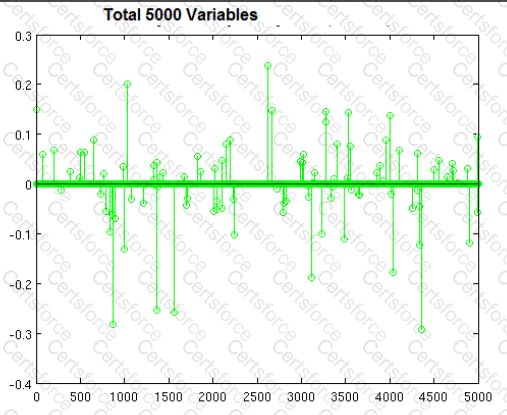Logistic regression is widely used in machine learning for classification problems. It is well-known that regularization is required to avoid over-fitting, especially when there is a only small number of training examples, or when there are a large number of parameters to be learned. In particular L1 regularized logistic regression is often used for feature selection, and has been shown to have good generalization performance in the presence of many irrelevant features. (Ng 2004; Goodman 2004) Unregularized logistic regression is an unconstrained convex optimization problem with a continuously differentiate objective function. As a consequence, it can be solved fairly efficiently with standard convex optimization methods, such as Newton's method or conjugate gradient. However, adding the L1 regularization makes the optimization
problem com-putationally more expensive to solve. If the L1 regulariza-tion is enforced by an L1 norm constraint on the parameLogistic regression is a classifier and L1 regularization tends to produce models that ignore dimensions of the input that are not predictive. This is particularly useful when the input contains many dimensions, k-nearest neighbors classification is also a classification technique, but relies on notions of distance. In a high-dimensional space, most every data point is "far" from others (the curse of dimensionality) and so these techniques break down. Naive Bayes is not inherently regularizing. Random forests represent an ensemble method; but an ensemble method is not necessarily more suitable to high-dimensional data. Practically, I think the biggest reasons for regularization are 1) to avoid overfitting by not generating high coefficients for predictors that are sparse. 2) to stabilize the estimates especially when there's collinearity in the data.
1) is inherent in the regularization framework. Since there are two forces pulling each other in the objective function, if there's no meaningful loss reduction, the increased penalty from the regularization term wouldn't improve the overall objective function. This is a great property since a lot of noise would be automatically filtered out from the model. To give you an example for 2), if you have two predictors that have same values, if you just run a regression algorithm on it since the data matrix is singular your beta coefficients will be Inf if you try to do a straight matrix inversion. But if you add a very small regularization lambda to it, you will get stable beta coefficients with the coefficient values evenly divided between the equivalent two variables. For the difference between L1 and L2, the following graph demonstrates why people bother to have L1 since L2 has such an elegant analytical solution and is so computationally straightforward. Regularized regression can also be represented as a constrained regression problem (since they are Lagrangian equivalent). The implication of this is that the L1 regularization gives you sparse estimates. Namely, in a high dimensional space, you got mostly zeros and a small number of non-zero coefficients. This is huge since it incorporates variable selection to the modeling problem. In addition, if you have to score a large sample with your model, you can have a lot of computational savings since you don't have to compute features(predictors) whose coefficient is 0. I personally think L1 regularization is one of the most beautiful things in machine learning and convex optimization. It is indeed widely used in bioinformatics and large scale machine learning for companies like Facebook, Yahoo, Google and Microsoft.

Submit